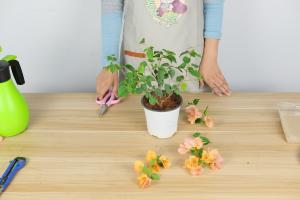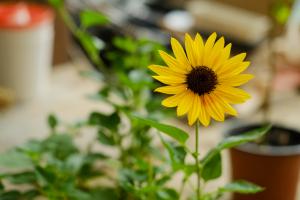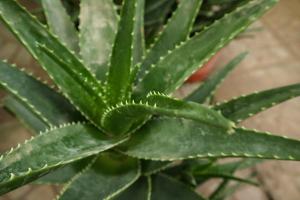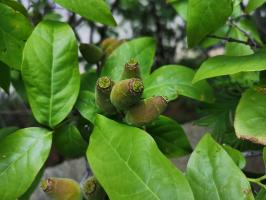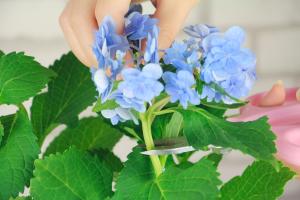Ceramsite

Function:
The gap between the ceramsite grains is relatively large, and the cushion at the bottom of the flowerpot can effectively prevent ponding~
Usage:
When changing, pouring and moving pots for flowers and plants, just put a layer of ceramsite on the bottom of the pot
Generally, a layer of ceramsite on the bottom of the flowerpot is enough. If the flowerpot is large, you can consider another layer
Crushed stone

Function:
The function of broken stones is similar to that of ceramsite. If there is no ceramsite at home, you can go out and pick up some small stones. However, compared with clay, broken stone is a little heavy
Usage:
Put the broken stones at the bottom of the flowerpot. Be careful to put less, otherwise you will feel very heavy when moving the flowerpot in the future
The size of crushed stones can be determined according to the flowerpot. If it is a very large flowerpot, you can choose some larger stones to put at the bottom of the flowerpot, which can breathe air and save soil at the same time
Cinder

Function:
There are plenty of voids on the burned cinder, which has strong air permeability and water permeability. It's great to put some in a flowerpot to raise flowers! Don't worry about water anymore
Usage:
1. Put the completely burned coal in water for one day

2. Smash the cinder with a hammer and other tools, preferably into particles the size of your little thumb belly

3. Sieve the small particles with a sieve, separate the large and small particles, and then wash them with clean water for 2 ~ 3 times respectively

4. Put the screened large particle coal slag on the bottom of the flowerpot, cover it with soil, and then plant flowers and plants

5. Those fine particles can be mixed with peat soil and nutrient soil and used as soil. Generally, the proportion of cinder accounts for two to three tenths

You can also directly plant meat with small cinders. The water permeability is very strong. You don't have to worry about ponding and rotten roots anymore
Broken brick and tile
Function:
In fact, the function of broken bricks and tiles is similar to that of cinders. It is mainly ventilation, because there are many gaps in the firing process of red bricks. Water and air can be stored in the gaps to avoid ponding
Usage:
1. Collect some broken bricks and tiles. It's best to soak them for one day. If you don't soak them, they will be dusty when they are broken

2. After soaking, break it with a hammer, preferably the size of a broad bean. Sift through the sieve, and then put the big one on one side and the small one on the other side
3. Those particles that are the size of soybeans or larger can be directly filled into the bottom of the flowerpot~

4. There are also some small particles that can be directly used to raise more meat
Loofah collaterals
Function:
Loofah is a kind of thing formed after loofah is old. It is very loose and breathable. It is very good to weigh the bottom of the basin
Usage:
1. Cut the towel gourd into blocks of the same size with scissors

2. Fill the towel gourd into the bottom of the flowerpot~

3. Then fill in nutrient soil and transplant plants~
Charcoal

Function:
Charcoal itself is very loose and breathable. It can also be disinfected. It is also rich in trace elements and various minerals. It is very suitable to be buried at the bottom of the flowerpot
Usage:
Use the burnt charcoal, then mash it, pick out the charcoal block the size of your little finger belly and fill it directly into the bottom of the flowerpot~
Pine bark

Function:
The pine bark is placed at the bottom of the flowerpot, which can penetrate water and prevent rotten roots. At the same time, the rotten pine bark is also a very good fertilizer
Usage:
1. Choose the one whose skin is gray and broken when pinched. Take it home and soak it in potassium permanganate for 30 minutes, disinfect it, and then dry it

2. Put the pine bark on the bottom of the flowerpot, or break it into pieces the size of soybeans, and then directly mix it with the soil to raise flowers

Walnut shell
Function:
The walnut shell is hard and can be placed at the bottom of the flowerpot as a waterproof layer, and it is very light. It is also convenient to move the flowerpot, and it can be used as flower fertilizer after decay
Usage:
1. Crush the walnuts, eat the walnut meat, and collect the walnut shell. If there is a large shell, remember to break it with a hammer
2. Throw the walnut shell to the bottom of the flowerpot, and then fill it with soil to raise flowers
Pine needle

Function:
The pine needle is loose and breathable, which is padded at the bottom of the flowerpot, which can effectively prevent ponding, and the pine needle decays slowly at the bottom of the flowerpot, which can also provide sufficient nutrients for plants
Usage:
1. Go to the roadside to collect pine needles. Be careful not to use the green ones. Preferably those that have withered and yellow

2. Spread out the pine needles and put them in the sun for disinfection. Or scald with boiling water for disinfection
4. Mix pine needles with a small amount of soil, put them into a large plastic bag and wet them with water

5. Then put it in a place with high temperature and keep it moist all the time. The fermentation can be completed in about 2 ~ 3 months in summer, and it takes longer in autumn and winter
Peanut shell

Function:
Peanut shell is very suitable for orchid planting material, which can help drainage and ventilation. Many orchid farmers are still using it~
Usage:
1. Chop up the remaining peanut shells and put them into plastic bottles. Add water to the plastic bottle

2. Soak the peanut shell for a few days. During this period, pay attention to changing the water repeatedly. The water in the bottle is about two-thirds of the peanut shell

3. Tighten the lid of the plastic bottle, open it for ventilation in about 10 days, turn over the peanut shell, and then cover it again. It can be done in about half a month in summer, and it takes longer in winter

4. When mixing soil, mix in the peanut shell and put about 20% - 50% of the peanut shell~


 how many times do yo...
how many times do yo... how many planted tre...
how many planted tre... how many pine trees ...
how many pine trees ... how many pecan trees...
how many pecan trees... how many plants comp...
how many plants comp... how many plants can ...
how many plants can ... how many plants and ...
how many plants and ... how many pepper plan...
how many pepper plan...